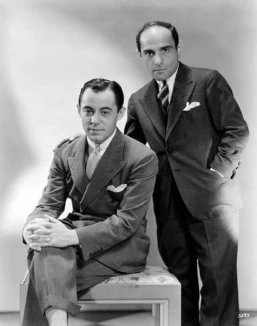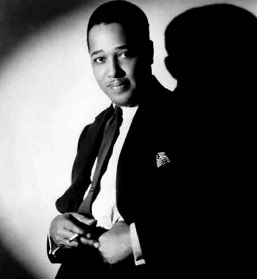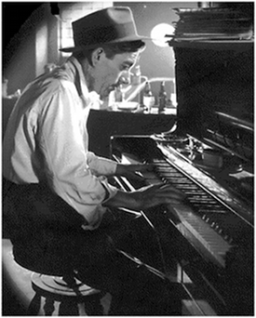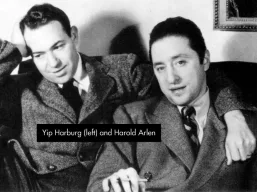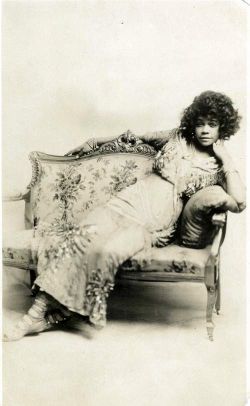1911-1913 selected standards and hits
_______________________________________
previous years:
______________________________________
Alexander’s Ragtime Band (Irving Berlin)
Oh, You Beautiful Doll (m. Nat D. Ayer, w. Seymour Brown)
The Sweetheart of Sigma Chi (m. F. Dudleigh Vernor, w. Byron D. Stokes) — click on the title to visit our separate feature page
(On) Moonlight Bay (Percy Wenrich, Edward Madden)
1912
My Melancholy Baby (Ernie Burnett, George A. Norton)
When Irish Eyes Are Smiling (Ernest Ball, Chauncey Olcott, George Graff, Jr.)
1913
You Made Me Love You (James V. Monaco, Joseph McCarthy)
Peg o’ My Heart (Alfred Bryan and Fred Fisher)
I Wonder Where My Easy Rider’s Gone (Shelton Brooks)
See also:
- Irving Berlin: early songs, a selection from 1907-1914
- Irving Berlin: songs about the South, 1911-1924
- Shelton Brooks: standards, 1911-1917
____________________________________________
1911
Alexander’s Ragtime Band
 On pp. 30-31 of the Complete Lyrics of Irving Berlin there is a long preface to the lyrics of Alexander’s Ragtime Band. I’ll quote the beginning and a couple of other fragments.
On pp. 30-31 of the Complete Lyrics of Irving Berlin there is a long preface to the lyrics of Alexander’s Ragtime Band. I’ll quote the beginning and a couple of other fragments.
Published. Copyrighted March 18, 1911. One of the greatest successes in the annals of popular music and the song that made Berlin famous all over the world. According to Berlin, who was quoted in a 1914 article in Theatre Magazine, “the melody came to me in eighteen minutes surrounded on all sides by roaring pianos and roaring vaudeville actors.”
The story of how Alexander was written was told to his friend, Renald Wolf, who recounted it in the Theatre article. Wrote Wolf, “the greater portion of the song was written in ten minutes, and in the offices of the music publishing firm Waterson, Berlin, and Snyder (then known as Ted Snyder Co., Inc.), while five or six pianos and as many vocalists where making bedlam with songs of the day.” He continued:

Berlin was not impressed by it when the melody first came to him. In fact, after playing over a few times on the piano, he did not take the trouble to note the melody on paper. He might never have completed the song had it not been for a trip to Palm Beach, Florida which months later he arranged to take with Jean Schwartz and Jack M. Welch. Just before train time he went to his offices to look over his manuscripts in order to leave the best of them for publication during his absence. Among his papers he found a memorandum referring to Alexander, and after considerable reflection he recalled its strains. Largely for the lack of anything better with which to kill time, he sat at the piano and completed the song.
Later in the preface Berlin explains that he originally wrote the melody, in 1910, as an instrumental piece. It was intended to be his first instrumental song, a common form for a ragtime song to be published in. However, he noted that,
No one liked it in that form so I set a lyric to it. It then lay on the shelf for some time as everyone thought the chorus was too long and the range to large for the ordinary voice. However, Emma Carus liked the song and introduced it in Chicago. It was a big hit for her and before long many other vaudeville acts were singing it.
The song’s popularity was far-reaching.
I took my first trip abroad in 1912 and was delighted to hear it whistled by a newsboy as I stepped off the train at the station in London. I soon realized how big a hit “Alexander” was in England. Within a year or so it became an international song hit and was translated in almost every known language.
Much has been written about the fact that Alexander’s Ragtime Band is not itself an example of the ragtime musical idiom. It is a march. However, it was so infectious and popular that it helped, by association, to revive interest in ragtime, which had evidently been waning in popularity since its heyday around the turn of the century.
Songfacts.com cites Alexander Baron of London England for the following comments regarding two dubious authorship claims:
Controversy also surrounded its origin; it was suggested that the song was written not by Berlin but by the black pianist Lukie Johnson, which Johnson himself denied. Later, Scott Joplin claimed Berlin had stolen the music from his opera Treemonisha; the two men do appear to have met, but that is as far as it went. Treemonisha was registered for copyright two month’s after “Alexander’s…”, but this did not deter Joplin, who died in 1917 convinced his work had been plagiarized. Towards the end of his life, Scott Joplin suffered from a degenerative illness which affected his mental powers, so the assertion must be treated with caution. His biographer Edward Berlin has made a careful study of this claim, but although, he says, there are similarities between “Alexander’s…” and “A Real Slow Drag”, this is hardly surprising, as a great many songs and instrumentals were written in the same style at that time.
According the Complete Lyrics, the most popular early recording was that by the renowned comedy team of baritone Arthur Collins and tenor Byron Harlan. Other important 1911 recordings included those by Billy Murray, and the Victor Military Band. It was later covered by many top artists including Bessie Smith, the Boswell Sisters, Louis Armstrong, Bing Crosby and Connee Boswell, and Ray Noble.
The song is memorialized on screen by Alice Faye in Alexander’s Ragtime Band (1938), and by Ethel Merman , Dan Dailey, Donald O’Connor, Mitzi Gaynor and Johnnie Ray in There’s No Business Like Show Business (1954).
Arthur Collins and Byron Harlan – 1911
.
Billy Murray – 1911
.
The Boswell Sisters – recorded 23 May 1934 with a studio orchestra under the direction of Victor Young
.
Bunk Johnson – 1945
_________________________
Oh, You Beautiful Doll (Nat D. Ayer, A. Syemour Brown)
Alf Campbell and Arthur Collins — Zonophone label; Second Hand Songs dates the record 1912
.
Bob Wills and his Texas Playboys – 1938, with slide show featuring work of pinup artist Gil Elvgren
.
The Sweetheart of Sigma Chi (m. F. Dudleigh Vernor, w. Byron D. Stokes) — click on the title to visit our separate feature page
(On) Moonlight Bay (Percy Wenrich, Edward Madden)
American Quartet, lead vocal by Billy Murray — recorded on 15 December 1911, and issued on the 78 rpm, 10″ single Victor 17034, b/w “The Harbor of Love” (Blake, Jones), recorded by Walter Van Brunt; the single was released in March 1912
.
Tommy Dorsey and his Orchestra featuring vocals by Frank Sinatra and the Pied Pipers, dance by Eleanor Powell and chorus – in the film Ship Ahoy (1942)
_________________
1912
 My Melancholy Baby (Ernie Burnett, George A. Norton)
My Melancholy Baby (Ernie Burnett, George A. Norton)
Jazzstandards.com says,
This song was likely introduced by vaudeville performer Jack O’Leary, known as “That Singer,” who is pictured on the original sheet music. A 1915 recording by vaudeville stage actor/vocalist Walter Van Brunt became a popular hit.
However, wikipedia says:
During 1912, William Frawley — later of I Love Lucy fame—- was the first person to perform the song publicly, in the Mozart Cafe in Denver, Colorado. Frawley told this story during a May 3, 1965 appearance on the TV game show I’ve Got a Secret. Despite its published title, in conversation it often is referred to simply as “Melancholy Baby,” without the word “My,” including by Frawley himself in the above mentioned appearance.
 (Above) The sheet music cover from 1911, referred to by jazzstandards, with photo of Jack O’Leary in center. I thought it might be a different song entirely but they explain the title change:
(Above) The sheet music cover from 1911, referred to by jazzstandards, with photo of Jack O’Leary in center. I thought it might be a different song entirely but they explain the title change:
The original title for “My Melancholy Baby” was “Melancholy.” It was copyrighted in 1911 with music by Ernie Burnett and lyrics by Maybelle Watson, Burnett’s wife. Burnett sold the piece to Theron C. Bennett, music publishers who liked the song but not the lyrics. George A. Norton, a composer and lyricist, wrote new lyrics, and the song was published in 1912 with a dedication to “Miss Maybelle Watson of Berkeley, California.”
______________________
Gene Austin – 1928
.
Al Bowlly had a hit with his 1935 recording. The video below features a live performance, with piano accompaniment, filmed while on a holiday in 1936.
.
Frank Sinatra – recorded 29 Jan 1945, arranged by Axel Stordahl
.
Judy Garland – from A Star is Born (1954)
.
Bill Evans and Lee Konitz – date unkown, possibly 1965
Piano- Bill Evans
Alto Sax- Lee Konitz
Bass-Niels-Henning Ørsted Pedersen
Drums- Alan Dawson
_________________
When Irish Eyes Are Smiling (Ernest Ball, Chauncey Olcott, George Graff, Jr.) The song was composed for Olcott’s original stage production, The Isle O’ Dreams. He sang the song in the show.
Below: John McCormack with orchestra. Originally issue circa 1923 according to the youtube provider.
.
Jack Daly – 1919
.
Irish tenor Frank Patterson
Wikipedia:
Frank Patterson (October 5, 1938 – June 10, 2000) was an internationally renowned Irish tenor following in the tradition of singers such as John McCormack and Josef Locke. He was known as “Ireland’s Golden Tenor”.
The recording is undated. Presumably it is from the 1980s or later. Following a move to rural Westchester County, New York in the 1980s, Patterson expanded his repertoire “adding hymns, ballads, and traditional as well as more popular tunes to his catalogue” and became a popular singer in the US. [1]
___________________
1913
Ballin’ the Jack (Chris Smith, Jim Burris). The song was the catalyst for a popular dance of the same name. The song and dance were performed in For Me and My Gal, the 1942 movie starring Judy Garland and Gene Kelly.
Prince’s Band — 1914
.
Jelly Roll Morton’s New Orleans Jazzmen — recorded 28 September 1939 and issued on the 78 rpm single Bluebird
B-10450-A, b/w “Don’t You Leave Me Here”
.
Kid Ory – recorded, says the provider, Feb 1945
.
Danny Kaye — B-side of the 1950 Decca single St. Louis Blues (Decca 9-24401)
___________
You Made Me Love You (James V. Monaco, Joseph McCarthy) Introduced in the Broadway revue The Honeymoon Express, 1913.
Al Jolson, 1913
.
Willie Solar – recorded in London in 1913
From the description information by the Youtube provider:
The popular American vaudeville comedian Willie Solar (1891-1956), accompanied by W. Vanderveer on the piano, sings ‘You Made Me Love You’ (written by James V. Monaco, with lyrics by Joseph McCarthy) as recorded for the HMV label (02508) at the studios of The Gramophone Co Ltd near London on 12 December 1913. Shortly before making this recording Solar had been appearing at the London Hippodrome in the revue, Hullo, Ragtime!; he also made a recording at this time of ‘I Want to be In Dixie’ for the HMV label (4-2429), and is known to have sung other ‘ragtime’ songs such as ‘When Uncle Joe Plays a Rag on his Old Banjo’ and ‘Ragtime Kid.’
.
Judy Garland‘s “Dear Mr. Gable” version with modified lyrics, from Broadway Melody of 1938 (1937)
.
Liza Minnelli sings You Made Me Love You for the cast of the Tony Award winning Broadway musical, THE LIFE, starring Sam Harris. The Broadway production, directed by Michael Blakemore, opened on April 26, 1997 at the Ethel Barrymore Theatre, where it closed on June 7, 1998 after for 466 performances and 21 previews.
_______________
I Wonder Where My Easy Rider’s Gone? (w. m. Shelton Brooks) is a ragtime/blues song written by Shelton Brooks in 1913. A response to the song was written in 1915 by W.C. Handy, “Yellow Dog Rag”, later retitled “Yellow Dog Blues”. Lines and melody from both songs show up in the 1920s and 30s in such songs as “E. Z. Rider”, “See See Rider”, “C. C. Rider”, and “Easy Rider Blues”.
“I Wonder Where My Easy Rider’s Gone?” was first popularized on the vaudeville stage by Sophie Tucker. It is most noted for its performance in a 1933 movie, She Done Him Wrong, in which Mae West sang it in a suggestive manner. – Wikipedia excerpt, adapted
Mae West in She Done Him Wrong (1933)
.
Carol Leigh & Climax Jazz Band – 1976
________________
Peg o’ My Heart (Alfred Bryan and Fred Fisher)
Charles W. Harrison – 1913
Dailymotion provider gigi129 says
Popular tenor ballad singer Charles Harrison had his first #1 hit in 1913 with Peg O’ My Heart. One of the busiest recording artists of the acoustic era, Harrison began his recording career in 1911 with the Columbia Phonograph Company. Success came quickly with the 1912 back-to-back top ten hits “I’m Falling in Love With Someone” and “Wallflower Sweet.”
.
Glen Miller and his Orchestra – undated; provider says “early,” suggesting it was recorded in the late 1930s
.
Guy Lombardo & his Royal Canadians – undated, though the provider speculates that it’s “probably from the late 1960s.”
__________________________________
* The four songs by the Mills Brothers on this audio clip:
Let Me Call You Sweetheart (Leo Friedman, Beth Slater Whitson -1910)
Meet Me Tonight in Dreamland (Leo Friedman and Beth Slater Whitson -1909)
I Want a Girl (Just Like the Girl) (Harry Von Tilzer, William Dillon)
When You Were Sweet 16 (James Thornton – 1898)















